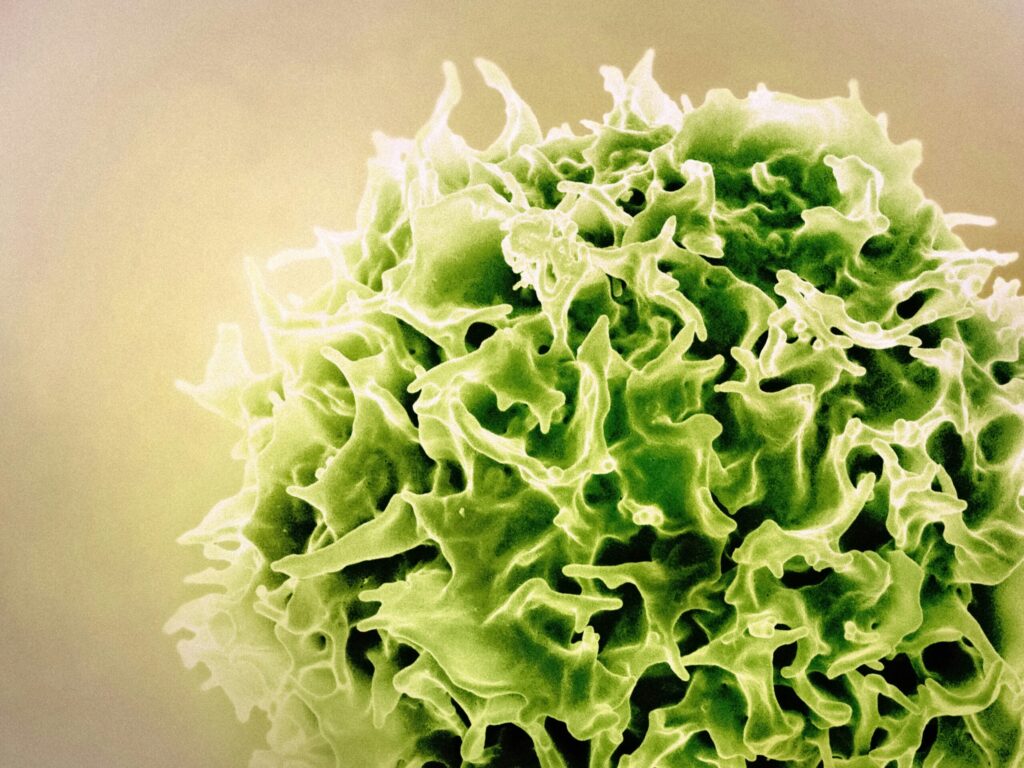In the battle against cancer, scientists have long sought ways to outmaneuver the disease, much like ancient warriors devising strategies to breach fortified cities. One of the most fascinating breakthroughs in cancer treatment today is Oncolytic Virus Therapy (OVT)—a revolutionary approach that uses engineered viruses to infiltrate and destroy cancer cells. To make this complex science more digestible, think of oncolytic viruses as Trojan Horses—stealthy invaders that sneak into tumors, multiply, and ultimately bring about their downfall from within.
What Are Oncolytic Viruses?
Oncolytic viruses are specially modified or naturally occurring viruses that selectively infect and kill cancer cells while sparing normal tissues. These viruses can come from different families, including herpes simplex virus (HSV), adenoviruses, vaccinia viruses, and reoviruses. Scientists engineer them to enhance their cancer-targeting abilities, ensuring they can effectively replicate within tumors and stimulate an immune response against cancer.
How Oncolytic Viruses Work: A Trojan Horse Inside Tumors
Just as the Greeks hid soldiers inside a wooden horse to infiltrate Troy, oncolytic viruses exploit the vulnerabilities of cancer cells to gain entry. Once inside, they replicate rapidly, causing the tumor cells to burst—a process known as oncolysis. But that’s not all: as the virus dismantles the cancer fortress, it exposes tumor-associated antigens, rallying the immune system to recognize and attack any remaining cancer cells. This dual approach—direct destruction and immune activation—makes OVT a promising frontier in cancer therapy.
Step 1: The Trojan Horse Enters the City (Selective Infection)
Cancer cells, much like the overconfident Trojans, lack strong defenses against viral invaders. Many tumors have defective antiviral mechanisms, allowing oncolytic viruses to slip inside undetected. Scientists design these viruses to specifically recognize and infect only cancerous cells, sparing healthy tissue from harm.
Step 2: The Soldiers Reveal Themselves (Oncolysis: Cancer Cell Destruction)
Once inside, the virus begins to multiply rapidly, just like Greek warriors emerging from the Trojan Horse to launch their attack. The infected cancer cell becomes overwhelmed by viral replication until it bursts, releasing newly formed viral particles that spread to nearby tumor cells. This cycle continues, leading to widespread tumor destruction.
Step 3: The City Gates Are Thrown Open (Immune System Activation)
As the Trojan Horse wreaks havoc inside Troy, its destruction signals reinforcements. Similarly, when cancer cells rupture, they release tumor-associated antigens—red flags that alert the body’s immune army. This recruits immune cells like T cells and natural killer (NK) cells, which now recognize cancer as an enemy and begin attacking remaining tumor cells.
Step 4: The Battlefield Shifts (Modifying the Tumor Microenvironment)
Tumors often create an environment that suppresses immune activity, much like a fortress designed to repel invaders. Oncolytic viruses change this by releasing immune-stimulating molecules (cytokines) and attracting more immune cells, turning a previously immune-resistant (“cold”) tumor into an immune-responsive (“hot”) tumor. This makes cancer more vulnerable to additional immunotherapies.
Engineering the Perfect Trojan Horse: How Scientists Improve Oncolytic Viruses
Just as the Greeks refined their battle tactics, scientists are continuously engineering oncolytic viruses to make them safer, more precise, and more effective:
Strengthening the Immune Response
Some OVs are designed to produce PD-1 inhibitors, preventing cancer cells from shutting down immune responses.
Blocking Cancer’s Disguise: The Trojan Horse and the Stolen Keycards
The Greeks didn’t just use brute force to take Troy—they also relied on deception. Just like the Trojans were tricked into opening their gates, cancer cells have devised their own way to fool the immune system into letting them pass unnoticed.
Your immune system acts like a well-guarded city, with T cells serving as elite warriors who patrol for threats. To prevent friendly fire, healthy cells carry an official “keycard” (PD-L1) that tells T cells, “We belong here—do not attack.” T cells have a scanner (PD-1) to verify these keycards before engaging.
But cancer, like a cunning infiltrator, has learned to forge fake keycards—producing excessive PD-L1 to trick the immune system into standing down. When T cells scan these fake credentials, they receive a false “stand down” order, allowing cancer to spread undisturbed.
In this high-stakes heist, checkpoint inhibitors act as a security override—revoking stolen keycards so T cells can finally recognize the enemy within the gates. This is where oncolytic viruses add another layer to the Trojan strategy. Some are now engineered to release PD-1 inhibitors, disabling cancer’s disguise and fully exposing the invaders. This ensures that once the Trojan Horse has breached the city walls, the immune system’s warriors can fight back at full strength, recognizing and eliminating every last intruder.
Cytokine Expression
Engineering viruses to release IL-12 or GM-CSF enhances immune cell recruitment to the tumor site
Chemokine Modifications
Some OVs produce CCL5 and CXCL11, which attract more immune cells to the battlefield
Enhancing Virus Replication Within Tumors
✔ Targeting Tumor-Specific Promoters:
OVs are modified to replicate only in cancerous environments
➡ Example: GP73 promoter ensures specificity for prostate cancer
✔ MicroRNA Regulation:
Certain genetic elements prevent replication in healthy cells, increasing safety
Improving Safety Profiles
✔ Attenuating Virulence:
Some OVs, like herpes simplex virus (HSV-1), have neurotoxic genes removed to prevent side effects
✔ Tumor-Selective Infection:
Viral surface proteins are altered to target tumor markers like HER2 or CD46, ensuring cancer-specific action
Combination Therapies: Reinforcements for the Trojan Army
Since no battle is won alone, OVs are often combined with other treatments:
Chemotherapy
✔ Some chemotherapies, like gemcitabine, weaken the tumor’s antiviral defenses, making it easier for OVs to infect cancer cells
Radiotherapy
✔ Radiation loosens the tumor’s structure, allowing oncolytic viruses to travel deeper into the tumor
Immunotherapy
✔ Combining OVs with CAR-T therapy or checkpoint inhibitors amplifies the immune response, leading to better cancer control
Novel Strategies: Upgrading the Trojan Horse
As warfare evolves, so too must the Trojan Horse. Scientists are constantly refining oncolytic viruses (OVs)—enhancing their stealth, delivery, and effectiveness, just like the Greeks refining their siege tactics for a more decisive victory.
Stem Cell Carriers: Smuggling Warriors Behind Enemy Lines
Imagine if the Greeks had hidden their warriors not just inside a wooden horse, but within Trojans themselves, sneaking past enemy watchtowers.
✔ Similarly, scientists use mesenchymal stem cells (MSCs) as covert carriers to smuggle OVs into tumors
✔ These stem cells disguise the viruses, protecting them from premature immune detection and ensuring they reach their target before unleashing their attack
Ultrasound-Assisted Delivery: Breaking Down the City Walls
A well-placed battering ram can weaken a fortress, making it easier for troops to storm in.
✔ Scientists use microbubble technology with ultrasound waves to temporarily open up tumor barriers
✔ This allows OVs to penetrate deeper into cancerous strongholds, ensuring no cancerous cell is left unchallenged
Artificial Intelligence (AI): The Mastermind Behind the Siege
Just as Greek generals studied their enemies to devise the perfect ambush, AI-driven algorithms analyze cancer genetics to design the most effective viral strategies.
✔ AI helps scientists fine-tune OVs, making them more precise in targeting specific tumors
✔ With AI, the Trojan Horse of cancer therapy becomes more intelligent, adaptable, and devastatingly effective
The Future of Oncolytic Virus Therapy
While the Trojan Horse strategy of OVT is incredibly promising, challenges remain:
- Immune Clearance: The body may recognize and eliminate OVs before they reach tumors
- Tumor Heterogeneity: Different tumor types require tailored viral designs
- Combination Therapy Optimization: Finding the best treatment pairings is crucial for success
Yet, as research advances, the potential of oncolytic viruses to revolutionize cancer treatment grows stronger. By engineering smarter, more targeted viral warriors, scientists are bringing the Trojan Horse strategy to the forefront of modern oncology—giving hope to patients battling even the most aggressive cancers.
Conclusion: The Dawn of a New Cancer Battlefield
Oncolytic viruses are reshaping the landscape of cancer therapy, turning the body’s natural defenses into powerful allies against the disease. With continued innovation, OVT could become a mainstay in cancer treatment, offering a targeted, effective, and less toxic alternative to traditional therapies. The Trojan Horse of immunotherapy is here, and its siege on cancer has only just begun.




